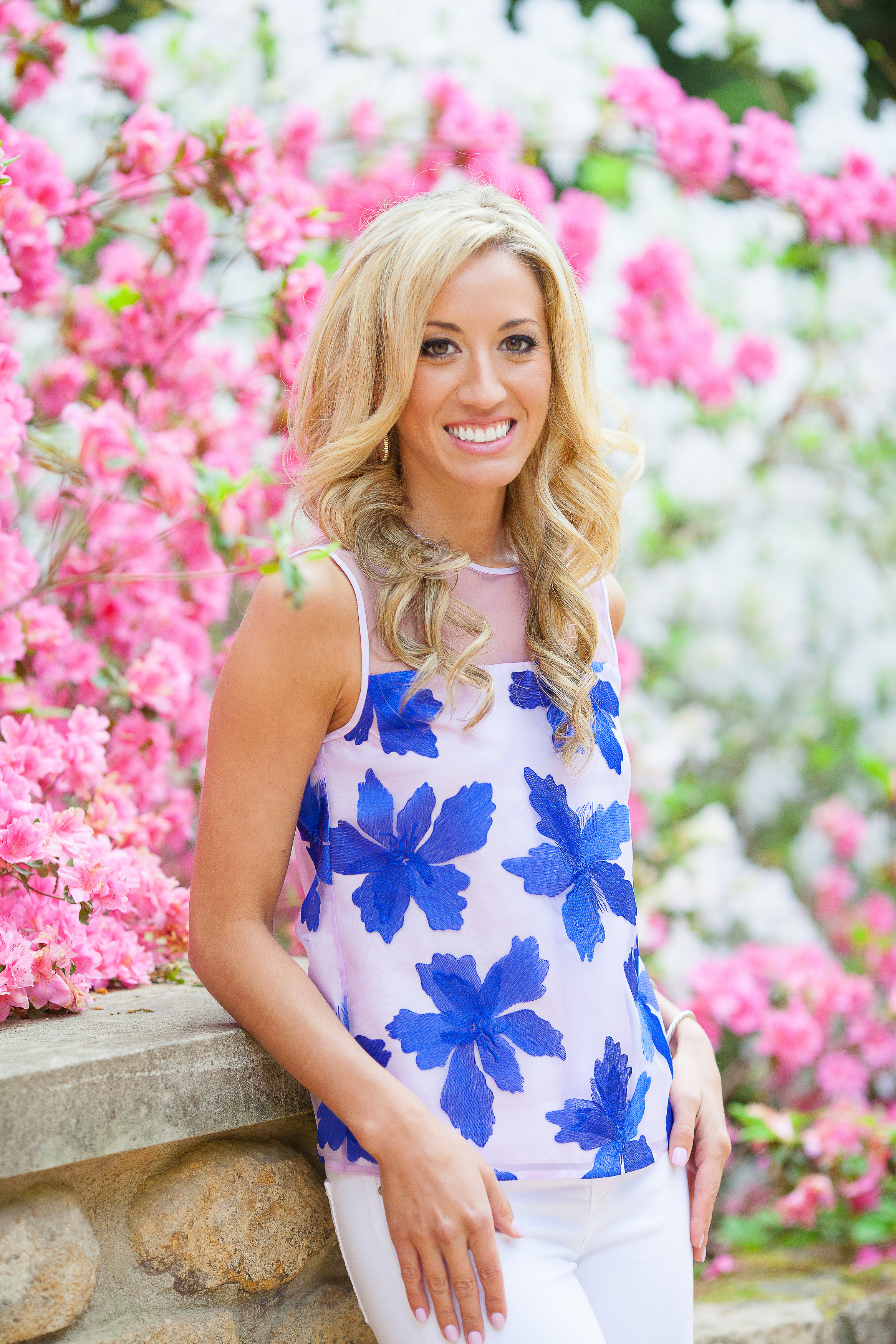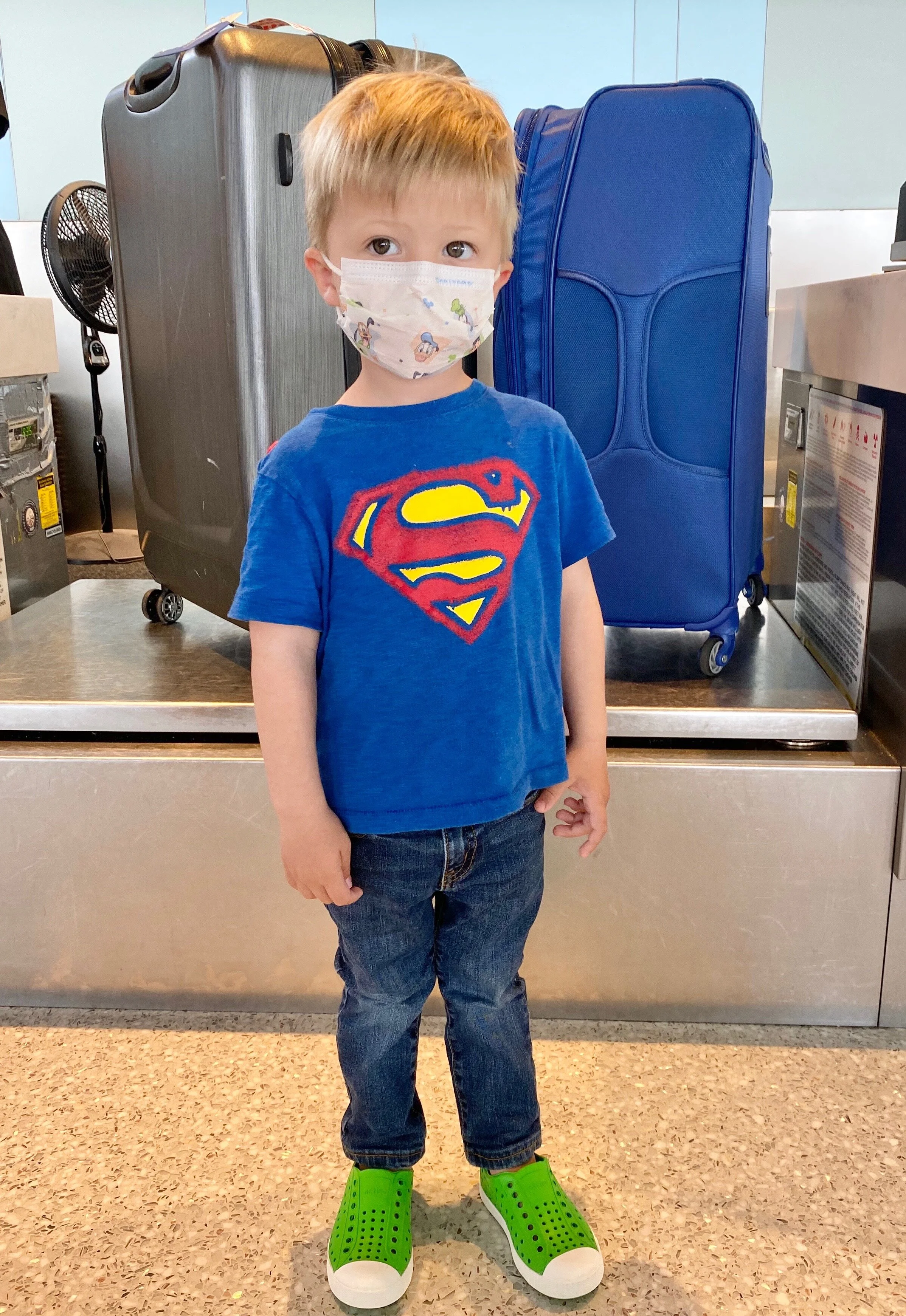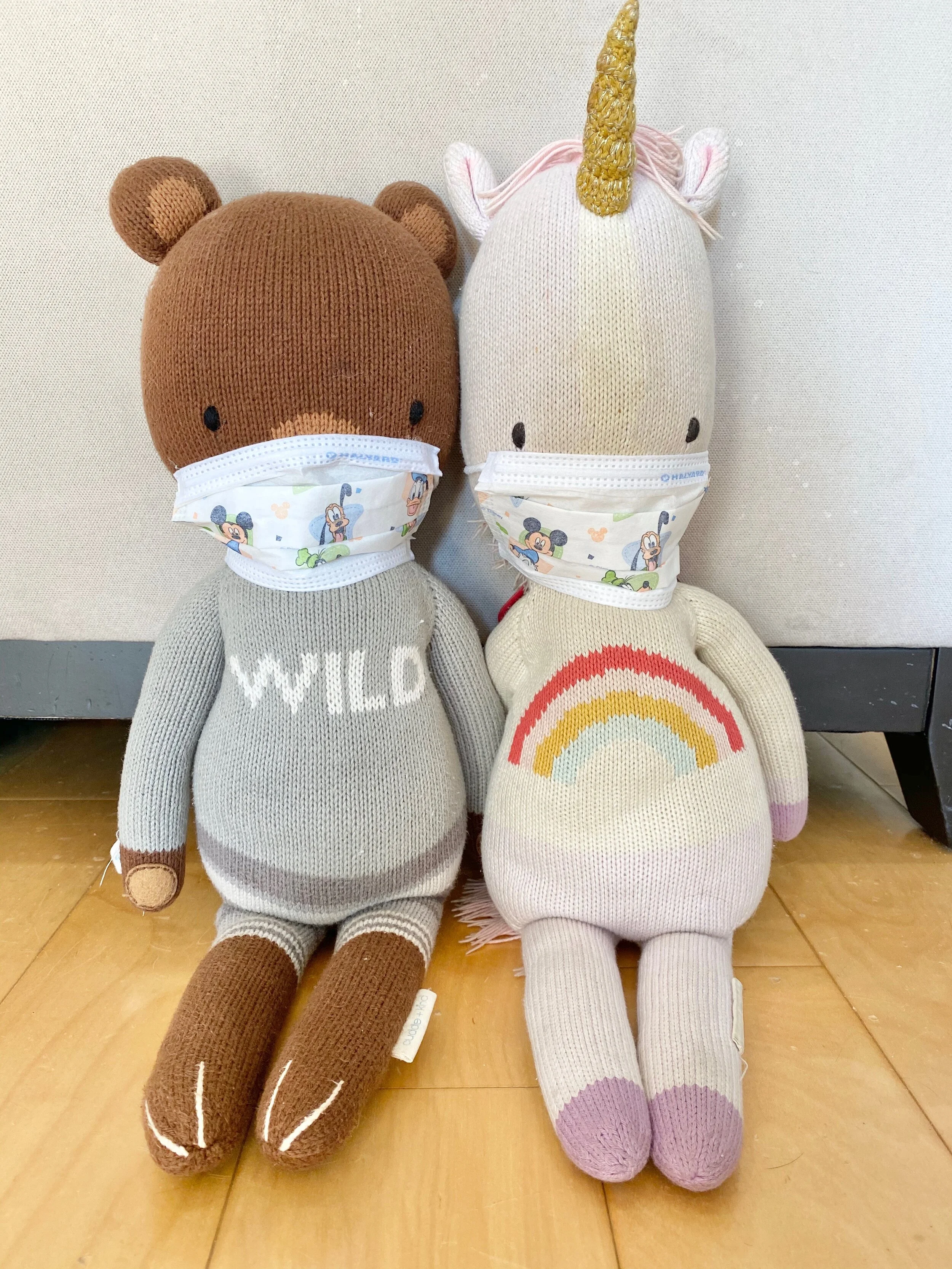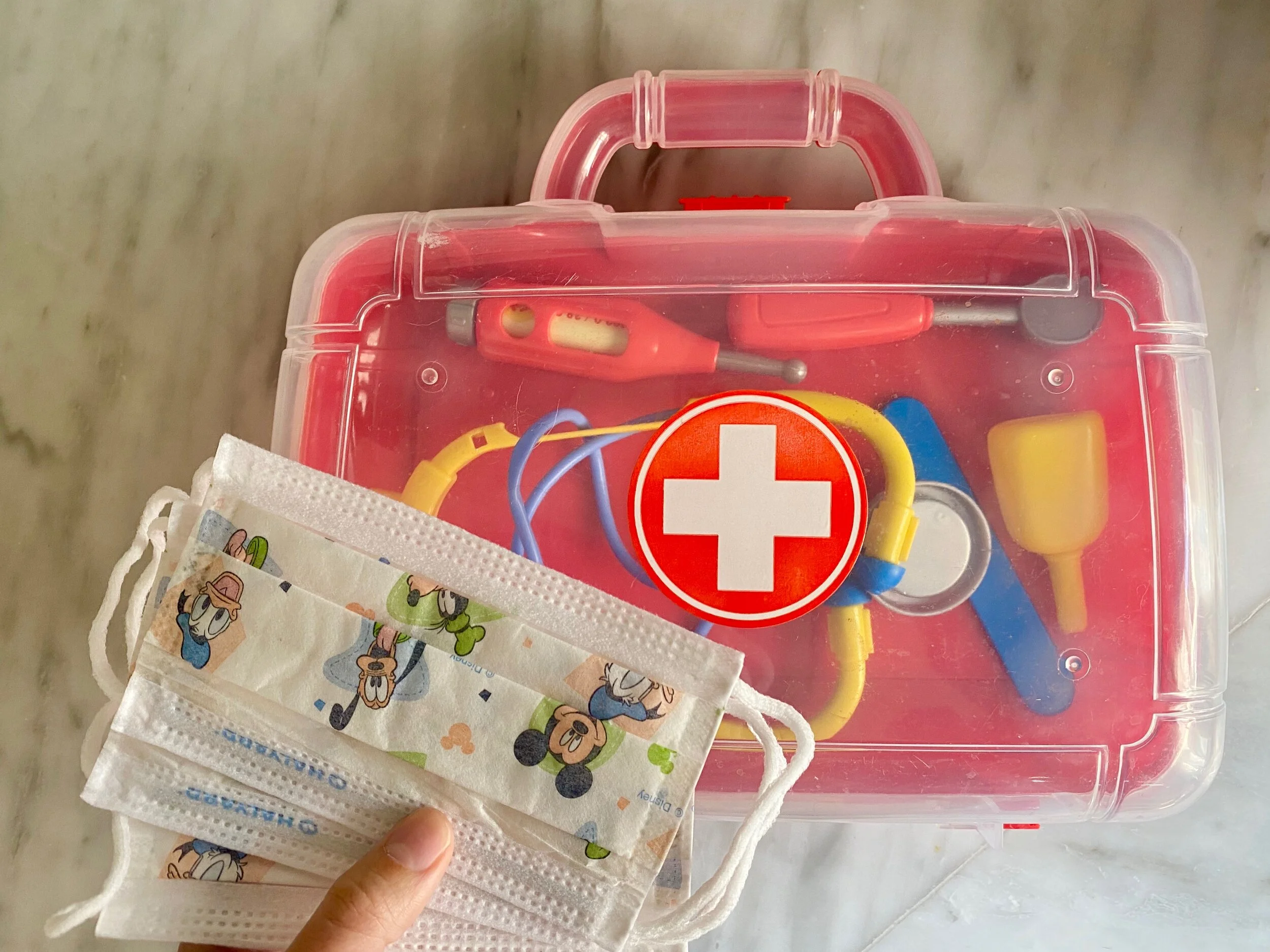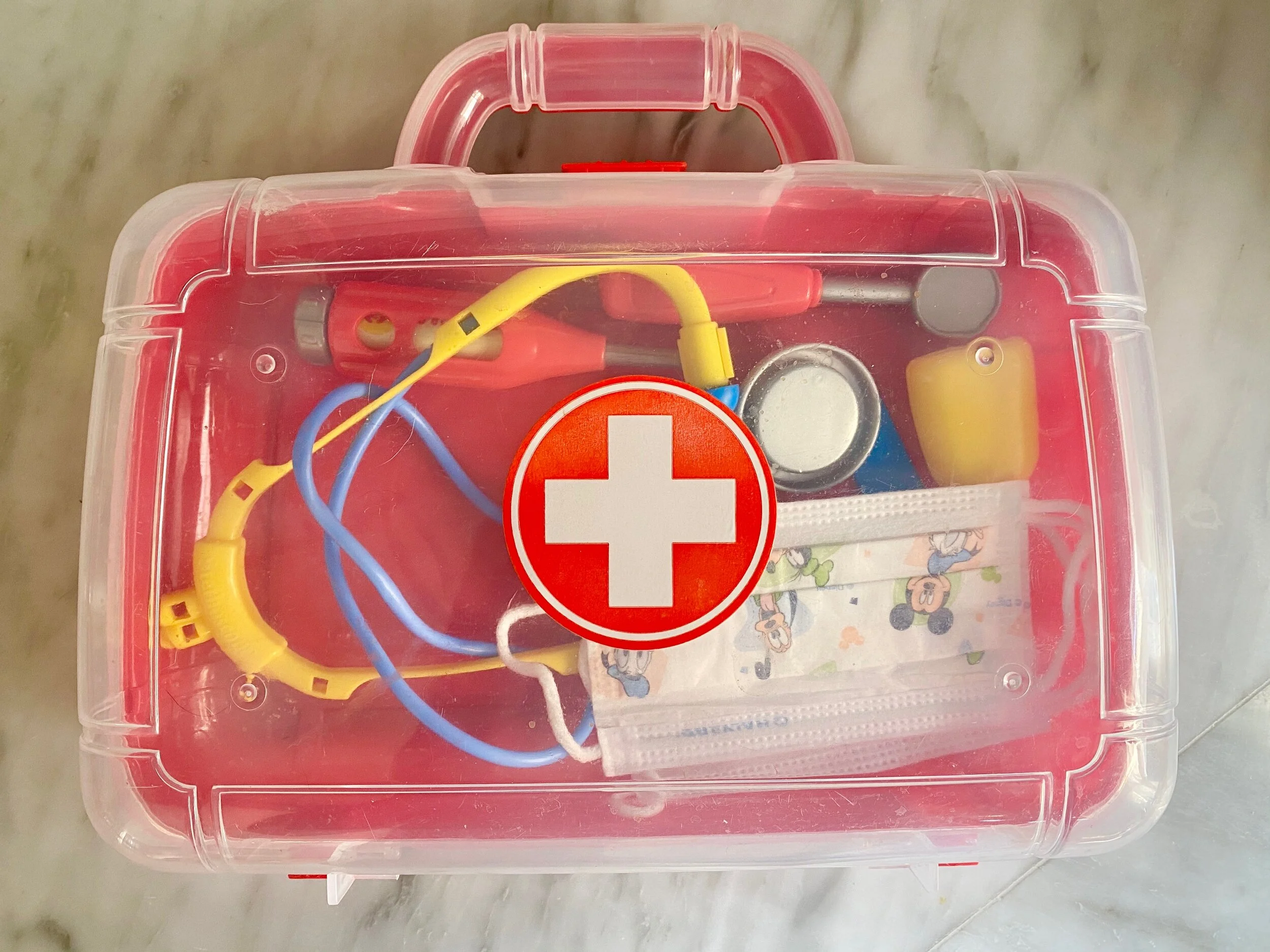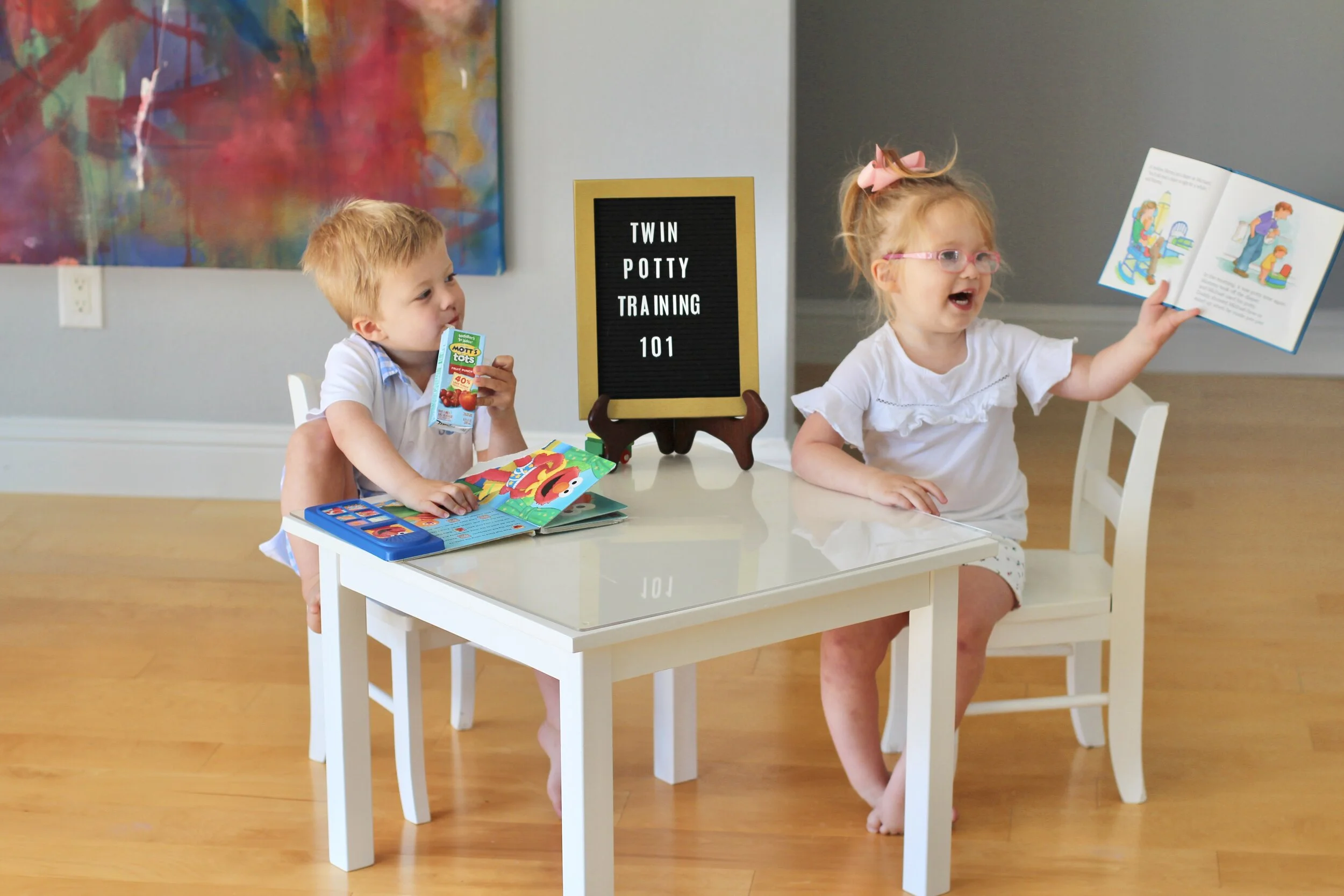How to Get Your Toddler to Wear a Face Mask
After our not even 3-year-old twin toddlers wore their face masks for roughly 5 hours straight while we flew cross-country recently, I knew our pandemic travel experience was successful. But we didn’t just slap the masks on their faces that same day without first figuring out how to make them follow the airport/airlines’ face mask-wearing rules. We were STRATEGIC! And our strategy led to two little kids complying with the rules from start to finish.
As a pediatric pulmonary nurse practitioner, COVID-19 is the last thing I want to see spread around my own family. I know many families are starting to go out in public and travel a little bit more now (and let’s be honest, toddlers are already challenging at baseline to do anything outside of the house with), so I thought I’d elaborate more on what we did to get our little ones to wear their masks for so many hours in a row. A note to mention before we proceed is that the CDC recommends for kids 2 years and older to wear a mask in public. Kids <2 years old should not wear a mask due to risk of choking, strangulation, or suffocation.
There are 10 things we did to get our twins to wear their masks like champs:
1. Let them try their masks on at home for several weeks beforehand.
For the weeks leading up to our recent vacation, I let the kids randomly try on their masks at home for a few minutes at a time at least once a week to acclimate them. My kids were wearing masks maybe once a week for the month prior—just to practice, to go run an errand, to go to a doctor’s appointment, etc. Initially, only one of my twins (Joules) immediately accepted the face mask on her face. Ames was NOT a fan and initially resisted. However, after following some of the steps below, he eventually warmed up and wore his like a rockstar, too.
2. Let them get involved in the decision-making process and allow them to be creative.
As we all know, developmentally toddlers like to feel “in charge” and they do better when they’re given options to choose from (instead of yes/no questions--because they’ll inevitably just say no to everything). Instead of asking them yes/no question like “Do you want the blue face mask?” you should ask, “Which mask do you want, the blue one or the orange one?” Options give them more autonomy and increase your chances of their buy-in. Other ways to get them interested is to let them be creative with it—let them color on their mask or get them to help you write their name on it!
3. Purchase kid-friendly face masks.
A couple of things to know before you purchase masks for your kids: make sure their mask has at least 2-3 layers, as studies have shown that having multiple layers within the mask better protects against the spread of viruses. Another nugget to know is that another recent study showed that neck gaiters or bandanas of thin material may be worse than having no mask at all—so stay away from those!
I made sure we had kid-friendly masks with Mickey Mouse on it. The Mickey design got them very excited about wearing it---and I think it contributed greatly to their compliance. Click below to see some great toddler-sized mask options. (By the way, the kind we use is the last one in this list and it’s the same kind my children’s hospital uses. However, they’re a bit expensive. So, the ones before that are more affordable options!)
4. Explain to them in simple terms why they need to wear a mask.
I explained to our children more than once why we ALL needed to wear them on the plane and at the airport. I said something like “Right now there’s some yucky germs going around that are making people sick. Our cool new Mickey Mouse masks will help us stay healthy so we can get on the airplane and then go play at the beach!”
5. Lead by example.
Make sure your kids see you wearing your mask, too—whether you’re running an errand or just practicing at home. At 2-3 years old, imitation is everything! They will copy exactly what you do.
6. Show them pictures of their favorite characters, friends their age, or people they know wearing face masks, too.
If you do a quick google search, there’s a plethora of cartoon characters and well-known superheroes wearing face masks. If they see their favorite person/character wearing one, then maybe they will want to do the same! Ames is a fan of superman—so when we found a picture of superman wearing a mask, he was interested. Ames even wore his superman shirt to the airport so he could copy him!
7. Let them see their own face in the mirror with the mask on.
Whenever I put them in masks to practice at home, I made sure to let them see themselves in the mirror while wearing it. This gave them the opportunity to see that their masks weren’t scary at all.
8. Incorporate masks into play time.
I let the kids put some of their masks on their favorite teddy bears and dolls. Medical play goes a long way! If your kids have a doctor’s kit, you could even add one of the masks into the kit so they can place it on their doll patients.
9. Give them positive feedback for wearing their mask.
When they had the masks on, I made sure to encourage them by telling them how cool they looked and how they were such big kids.
10. Make sure their masks are comfortable.
If the masks are too big, too tight, too thick, or the straps hurt, then the kids will be inclined to adjust the mask, touch their faces, or pull the masks off. So, ensure the kind you buy are soft, breathable, and have a good fit for your child’s face.
If for some reason you aren’t successful in getting your child to wear a face mask, then you could also consider a children’s face shield like these:
Hope this helps you get your little ones to be comfortable face mask pros soon! If you have any additional tips then feel free to share them below.
